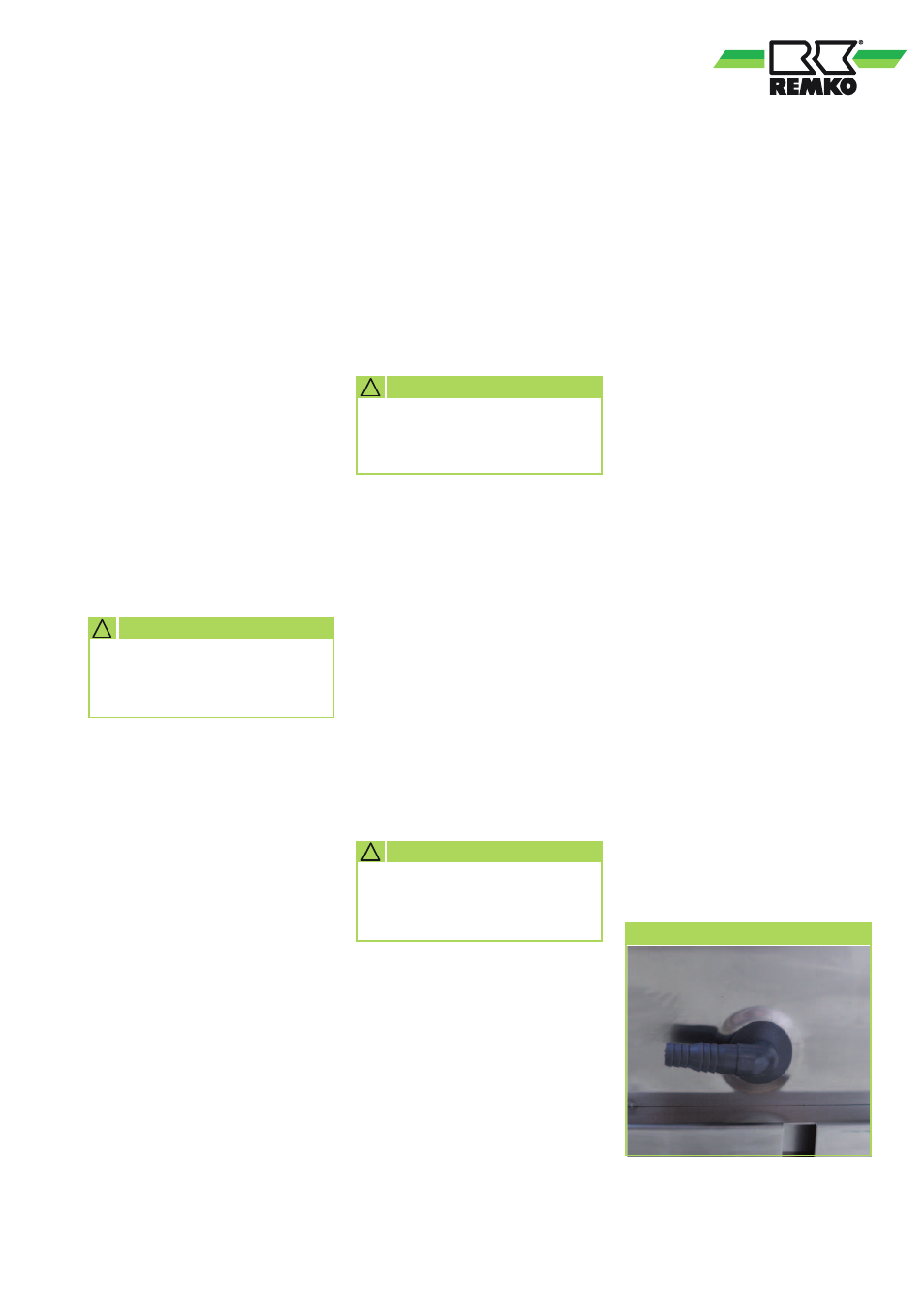Condensate draining and ensured discharge – REMKO RVS 60 H User Manual
Page 25

Air bleeding valves
The unit has manual air bleeding
valves. The unit can be vented
separately after the system
has been filled. Automatic air
bleeder must also be installed at
the highest point in the collective
lines.
Glycol suitable valves are
necessary when using medium
that contain glycol.
!
CAUTION
A minimum medium volume in
the system may mot fall below
3.5l/kW per power stage.
!
CAUTION
Improperly installed or missing
dirt traps can cause fouling of
the plate heat exchanger.
!
CAUTION
Fill and drain connection
A connection should be provided
in an area safe from frost for the
draining of the pipe lines (especial-
ly if water is used as a medium).
Applicable local disposal regula-
tions must be observed if glycol is
used.
Dirt trap
A self cleaning dirt trap must be
installed on the intake side of the
unit. The mesh size should not be
less than 10 mesh/cm². Shutoff
valves should be installed on both
sides of the dirt trap.
External medium storage tank
If, for example, the necessary ca-
pacity of the appliance indoor unit
is significantly less than the cooling
capacity of the chiller, an increase
in the medium content is recom-
mended. Either the medium lines
can be oversized or an additional
storage tank installed.
A storage tank should, as a rule,
be provided if the minimum me-
dium volume of the system is not
reached.
Shut-off valves
As a rule, in such systems, shut-
off valves (ball valve) with open
passages should be used. For the
purpose of servicing, medium
intake and medium outlet must be
equipped with shut-off valves (if
necessary safety valves).
Condensate draining and
ensured discharge
Condensate connection
If the temperature falls below the
dew point, condensation will form
on the finned condenser during
heating operation
.
A condensate drip pan should be
installed on the underside of the
unit to drain any condensate.
■
The condensate drain pipe to
be installed on-site must be in-
stalled with a in cline of at least
2 % for good drainage.
If necessary, fit vapour density
insulation.
■
When operating the system at
outdoor temperatures below
4 °C, care must be taken that
the condensate line is frost
protected. The lower part of the
housing and condensate pan
are to be kept frost free in order
to ensure permanent drainage
of the condensate.
If necessary, fit supplementary
pipe heating.
■
After completed installation,
check that the condensate
drainage is unobstructed and
ensure that the line is leak tight.
Condensate drain
25
